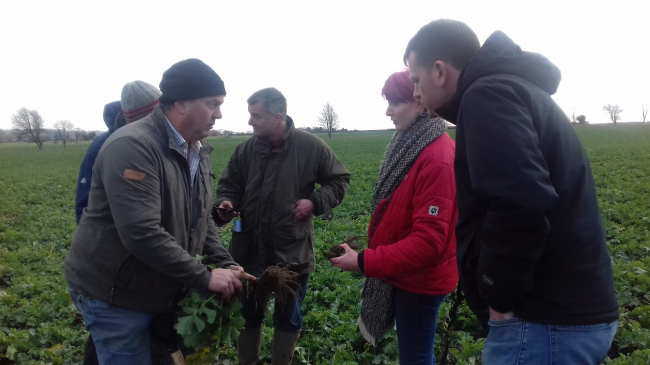Plant spacing proves to be important for OSR; of three sites where cross-drilling was tested, the two with wide rows (0.5m) showed positive yield effects, and one with narrow rows showed a reduced yield.
A series of trials performed by an Oilseed Rape Cross Drilling FIG aimed to generate a better understanding of the benefit of optimising plant spacing for OSR. Cross drilling, whereby each plant should have an equal distance to the next plant on all sides may help to contribute to optimising canopy size, maximising plant branching and improving yield.
Each farmer drilled a ‘cross drilled’ area of a field in 2018, in which 50% of their standard seed rate was drilled in one direction and 50% in the perpendicular direction.
There was no significant difference in plant establishment between the two drilling treatments. Statistically significant yield effects were positive in two experiments (+1.1 t/ha and +0.2 t/ha) and negative in one experiment (-1.0 t/ha). Grab samples taken from the site where the positive yield response was obtained indicated that the improvement in yield was due to an increased number of seeds/m2 plus a smaller increase in TGW.

The variation in yield response across the three trials could be due in part to the different row spacings used. Positive responses were obtained with 50 cm rows whereas the negative response was obtained when the row spacing was much narrower.
This work highlighted that 50 cm row spacing could be too wide in some situations. It also provides evidence to suggest that getting spacing right for OSR is important, and that developments in precision drilling could help to optimise this. Growers should consider the type of canopy that they are targeting and how plant population and row spacing can be used to achieve this.
Click here to read full report.
